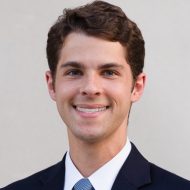March 8
Last night, we took advantage of the evening to walk through a bit of Old Town by the hostel. We passed the basilica and located the Museum of Contemporary Art. I am not the biggest contemporary art fan, but there was a big exhibit of an Ecuadorian artist that we both really liked.





This morning we left for Plaza Grande and joined the 10 AM Mass at the Metropolitan Cathedral. It was a beautiful morning and we sat in the main square for a few minutes before being asked to leave because of a women’s march that was headed to the square. (Some of the marchers’ signs we would see throughout the day showed some pretty shocking/terrible statistics of violence toward women in Ecuador).

We went down the street to the Museo de Ciudad. It was a great museum, showing the history of Quito from 10,000 BC to the present. The museum itself is in a former hospital and sits along La Ronda.







We made our last visit to the Central Market. We finally had llapingachos, and purchased mangos and chiramoya. I had been wanting to try this snack/dish made with mote, toasted corn, and chocho (lupini beans) topped with onion and spices that people took to go. Although we were full we got one to try and I am really glad we did – better late than never.
With much of the afternoon remaining, we set out for La Floresta to visit the Pacari store and cafe. They have fancy chocolate and coffee drinks, as well as vegan ice cream. So we tried passionfruit-chocolate swirl.

We took our final visit to the rooftop of the nearby hostel with the panoramic views of the city and then went to our hostel for a good night of sleep.
We made the most of our last day in Quito. We went to Old Town in the morning, Claire got a haircut and found some espadrilles. We checked out of the hostel but left our bags until night, as our flight left around midnight.
Our plan was to go the Guayasamin Museum. Guayasamin ranks among the most well-known Ecuadorian artists. In his later years, he built a beautiful home overlooking Quito and made it a museum of all of the art he had collected, as well as some of his own pieces so that they would remain in Ecuador. He then began filling an enormous building that he built with incredibly large original works of art. It is called La Capilla de Hombre (Chapel of Mankind) and is filled with art despite the artist passing before he finished.
It was a long walk to the museum. On the way, we came across the artisanal market, which had over two hundred booths with of souvenir-type products. It was interesting to see. We were continuing through Mariscal when I saw a boy with an ice cream cone. A second later, I looked up and saw a soft serve ice cream stand on the sidewalk. They had passionfruit ice cream cones for fifty cents – so I had to have one.
Once at the museum, we received a tour and spent time in La Capilla de Hombre. Guayasamin has a very unique style and his works are influenced by many of the dark conflicts he witnessed an experienced in his life including World War II and armed conflicts in South America.














After the museum, we ate our mangos and rehydrated, and then began the long trek back to the hostel. We walked the streets of Mariscal (and I purposely returned down Avenue de Amazones so I could get another passionfruit ice cream) and ended up at a small restaurant that we had seen when our trip began.

It was past dark, but our flight was so late that we went back to the Grand Plaza one final time. We returned to San Blas Plaza, got fresh clothes, repacked our bags, and waited for our taxi to the airport. We spent the thirty-five minute drive looking out on the lights of Quito sprawling in all directions around the mountain peaks.
















































































































